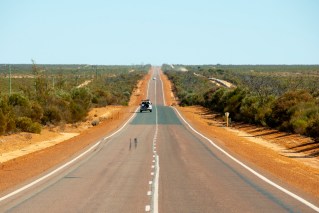Report calls for end to outdated logging of NSW native forests

The Greens' Sue Higginson says logging native forests is a high-emission industry and wasteful. Photo: AAP
Logging in native-growth forests across New South Wales releases millions of tonnes of carbon into the atmosphere and costs the taxpayer millions to support, prompting calls to shift entirely to plantations.
Native forest logging releases about 3.6 million tonnes of carbon dioxide every year – equivalent to 890,000 additional cars on the road or 390,000 return flights to London, according to a new report authored by Dr Jennifer Sanger from The Tree Projects.
The report was in response to what experts say are misleading reporting practices that count native forests not being cut down as emissions saved.
Dr Sanger and others including Greens MP Sue Higginson on Monday called for an end to native forest logging in NSW to avoid placing a major handbrake on emission reduction efforts.
Victoria, which logs more native forest than NSW, has a plan in place to end the practice by 2030 while WA will spend $80 million moving businesses and communities away from the practice from 2024.
“Many Australians would be shocked to find out that native forest logging is such a high emitting industry,” Dr Sanger said.
“We need to act now on climate change and for Australia, this means ending native forest logging.”
Ms Higginson said less than 10 per cent of the wood from native forests is used for timber and the rest becomes pulp for paper, woodchip, is burnt or left in the forest.
While NSW purpose-grown plantations earned $94 million in the past two financial years, the forestry corporation’s native forests division lost $28 million over that time.
Plantations were far more sustainable and profitable and were the source of 85 per cent of Australia’s timber, Professor Brendan Mackey from Griffith University told AAP.
“The native forest logging is really a legacy of how we used to do things,” Professor Mackey said.
“We don’t need to log native forests anymore because we have a very good plantation estate.”
Aside from native forest logging being outdated, ecologically destructive and unprofitable, the forests play an important role in mitigating greenhouse gases, he said.
“People talk about carbon capture and storage technology – it already exists – it’s called a forest ecosystem,” Professor Mackey said.
“When you log native forests you’re causing a lot of that carbon to be released back into the atmosphere in a short period of time.”
The NSW Greens want the state’s native forest logging industry to only use sustainable plantation timber., saying the “weak” net zero by 2050 commitment relies on it.
The government said waste was minimised by using as much of every felled tree as possible.
“Timber is the most renewable building material available as the same forests that are harvested are regrown each year,” Agriculture Minister Dugald Saunders told AAP in a statement.
“It has a much smaller carbon footprint than other popular building materials like steel or concrete.
“State forests make up less than 10 per cent of forested land in NSW and around half of this area is set aside for conservation. Of the remaining area not specifically set aside for conservation, only around one per cent is harvested for high-quality timber.”








